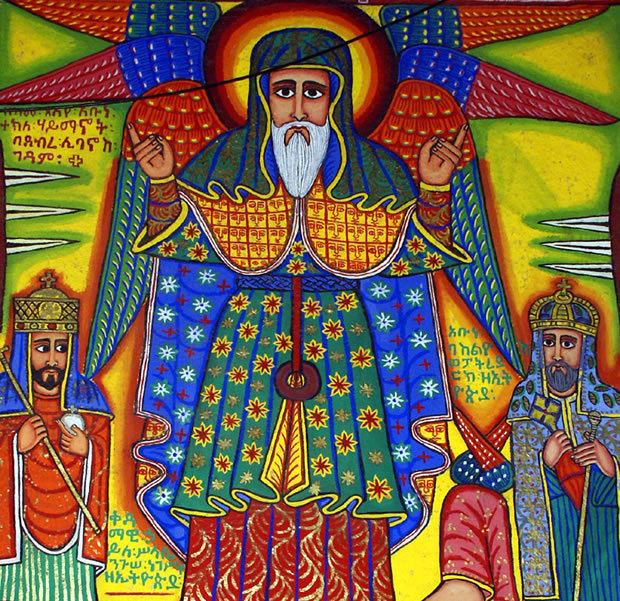Hey everyone, I hope you enjoyed the latest episode of the History of Africa podcast. This latest episode focuses on Degna Djan, one of the last kings of Aksum, and, somehow, one of the greatest kings in Aksumite history. During his rule, he oversaw an Aksumite renaissance, leading to the final period of Aksum as the hegemon of East Africa.
 |
| Lake Hayq, one of the likely locations of the Late Aksumite capital of Ku'bar |
Despite his importance to Late Aksumite history, Degna Djan is an elusive figure. There are no surviving contemporary depictions of him, and even the exact date of his rule is unknown. However, what sources we do have of his reign are composed of a combination of Coptic church records, the later works of Ethiopian monk Tekle Hayamanot, and the various oral histories of post-Askumite Ethiopia. When compiled and viewed critically, these sources form a picture of an incredibly impressive reign which revitalized the Aksumite Empire and even expanded its frontiers.
 |
Tekle Hayamanot, a prominent Ethiopian saint, abuna, and historian, depicted in a church mural
|
The primary defining development of Degna Djan's reign was an emphasis on the recentralization of power. Askum, throughout the last several centuries, experienced a gradual decline in the authority of the Negus. The empire's nobility and church had increasingly gained power, with the king now essentially relying on the church as a mechanism to persuade the nobility to respect his authority. Degna Djan, however, cooked up a scheme to recentralize power in his control.
Notably, the kingdom of Aksum had lacked an abuna, or patriarch, to rule its church for several decades. The abuna was typically a foreign (usually Egyptian) bishop. Due to their lack of local connections, the abuna was incredibly dependent on the negus to legitimize his authority, and in turn the abuna gave the negus a greater degree of control over the church. In order to prevent this threat to their power, the increasingly influential priests and bishops of Aksum had long blocked the appointment of a new abuna. However, Degna Djan cleverly schemed to distract them. The Amhara and Agaw communities of the southern Aksumite territories, while technically under Aksumite suzerainty, were only loosely subjects of the empire. While their leaders paid tribute to the Aksumite king, they were largely independent in terms of governance. Many of them even continued to practice traditional religions, as opposed to the staunch Christianity that dominated the interior of the empire. Degna Djan ordered that the church officials, in order to more fully integrate the Amhara and southern Agaw into the Aksumite Empire, should convert the locals to the Orthodox Christianity practiced by the Aksumites.
However, while the majority of priests and bishops led missionaries into the Amhara region, Degna Djan used their absence to appoint a new abuna. The new abuna, Peter, was especially reliant on the king due to the unexpected nature of his appointment, so he acted essentially as a puppet of Degna Djan. With this move, Degna Djan vastly improved his power within the Aksumite state, as he now de-facto commanded the Aksumite church.
With the newly centralized state's resources at his disposal, Degna Djan raised the largest army that Aksum had seen since the era of Kaleb and began a series of conquests against the empire's neighbors. The people of the south and east were relegated into tributaries, while the territories to the north, lost to Beja raids shortly before Degna Djan's rule, were recaptured.
However, while Degna Djan's reign may seem to be a complete success, his time as Negus would cause several problems in the long run. For starters, he struggled to establish a clear heir, a problem which will have disastrous consequences in our next episode. Next, his conquests resulted in Aksum making many enemies outside its borders. The Sultanate of Showa, Harla, and Semien, especially, were threatened by Degna Djan's aggressive revanchist conquests. These problems would compound in a crisis so great that it would eventually end the now centuries old Aksumite Empire.






